Wall sconces with switch
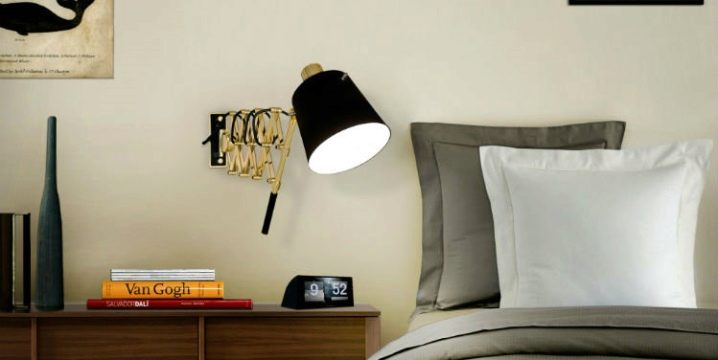
Lighting is a key element in the interior of any home. It is good if it is sufficient. But often, for additional lighting, you have to purchase wall sconces with a switch. These lighting devices have a number of advantages, due to which they harmoniously fit into the interior of a residential building or apartment, making up for the lack of central lighting.
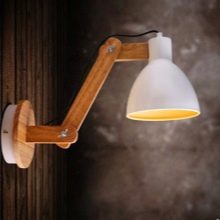
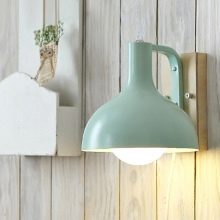
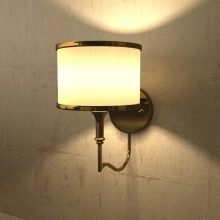
Peculiarities
Wall sconces with a switch are decorative local lighting devices that are attached to the wall using special fastening tools. These devices are functional devices.
Regardless of model, size and shape, they:
- make up for the lack of central lighting to the required volume;
- due to the tone of the light flux used, they visually change the space of the room, filling it with the desired atmosphere;
- compensate for the level of illumination concealed by the dark color of wallpaper and furnishings;
- are a light source when there is no need to use a central lamp;
- depending on the model, they function as a night light, illuminating the child's room with dim light;
- are stylistic support, differing in original design.

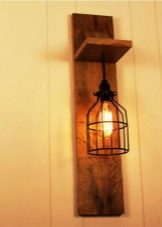

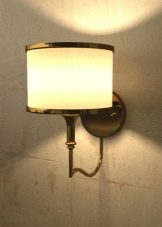
Wall lamps have a lot of advantages:
- they are distinguished by a wide range of models, which makes it possible to successfully fit the lamp into any interior;
- depending on the model, they are suitable for use in different rooms of the dwelling (including a small-sized plan);
- can be located anywhere on the wall, taking into account the interior composition;
- are single accents or paired symmetrical accessories;
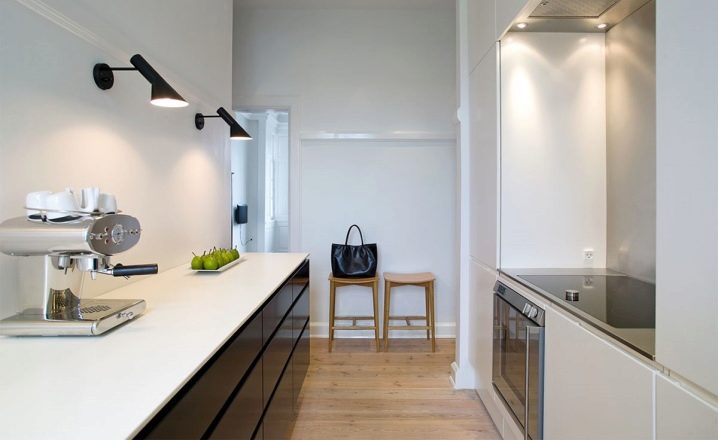
- are made of various modern materials in compliance with safety requirements and attractive design;
- differ in the type of installation and type of switch, allowing the buyer to purchase the most convenient option;
- have a rich range of sizes, allowing you to harmoniously fit the product into a specific room with the characteristics of the area;
- have several types of light sources, varying warm and cold shades, allowing you to choose a temperature close to daylight;
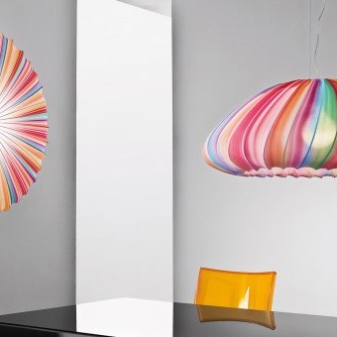
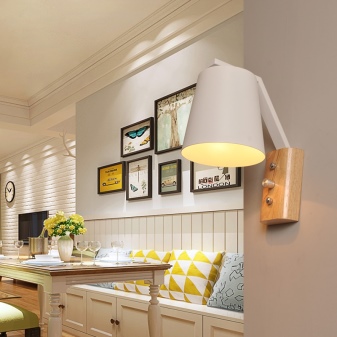
- create a welcoming atmosphere in the room, organizing the illumination of a specific space;
- have an extensive color palette of finishes, which is convenient for styling and highlighting the accents of the furnishings;
- save the work of central ceiling lighting, which often reacts to frequent switching on and off;
- have different costs, which allows you to find the best option for a harmonious decoration of the situation to match the main lighting, taking into account the available budget.
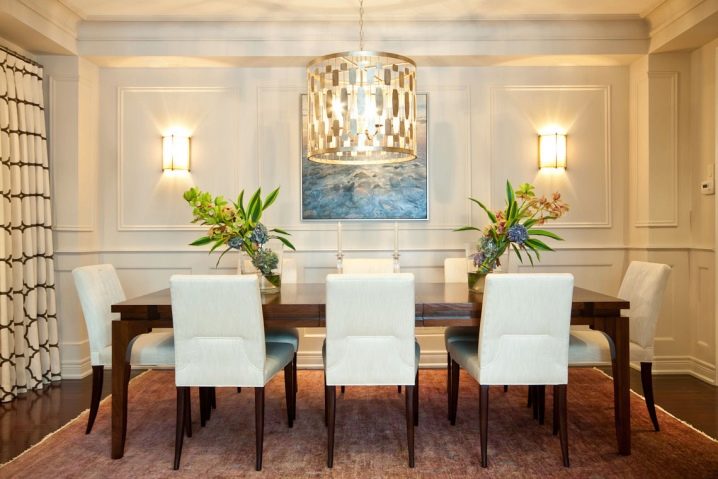
Minuses
Wall lights are not without drawbacks:
- for greater aesthetics, they need a hidden type of wiring;
- in most cases, they do not provide sufficient lighting;
- in open-type models are unsafe for children.
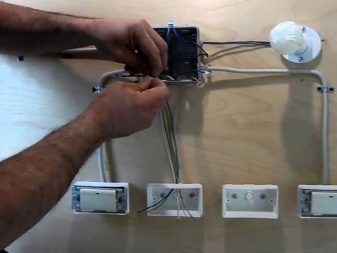
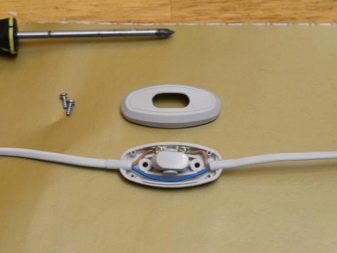
Sources of light
These lighting fixtures are classified according to the type of light source.
They use:
- filament;
- halogen lamps;
- fluorescent bulbs;
- LEDs.
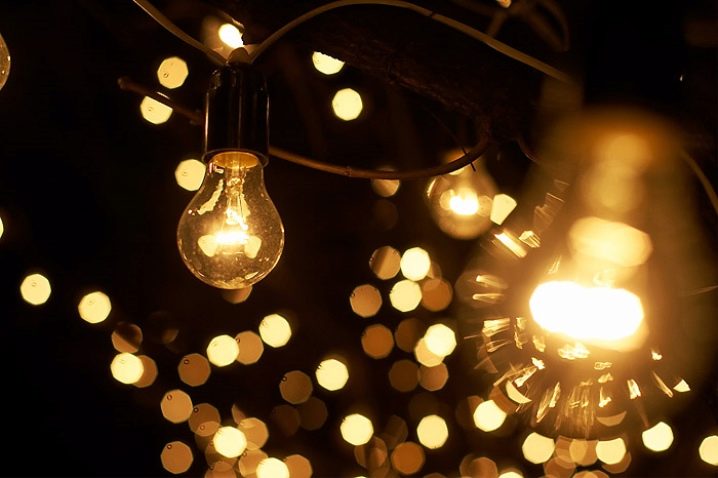
Incandescent lamps are well-known Soviet devices that have lost their relevance due to inefficiency. They get very hot during operation, consume a lot of electricity and are dangerous if not covered with a shade (they can burn your hands). Halogen counterparts are distinguished by better light output, are more durable, and the shade of the glow resembles natural light.However, they do not tolerate surface contamination, are expensive and burn out due to the high temperature inside the lamp.
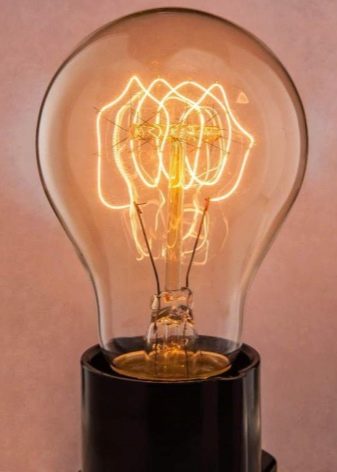
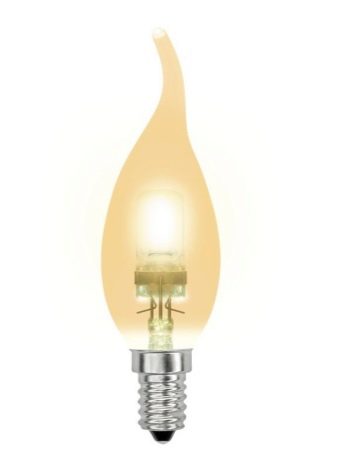
Fluorescent lamps are energy-saving devices familiar to everyone, which are durable, practically do not heat up, and save energy. However, these light sources are dangerous, which manufacturers keep silent about. In the process, they release mercury vapors into the air. They are afraid of power surges, are incompatible with dimmers, tire the eyes and are distinguished by a buzzing sound at the time of operation.
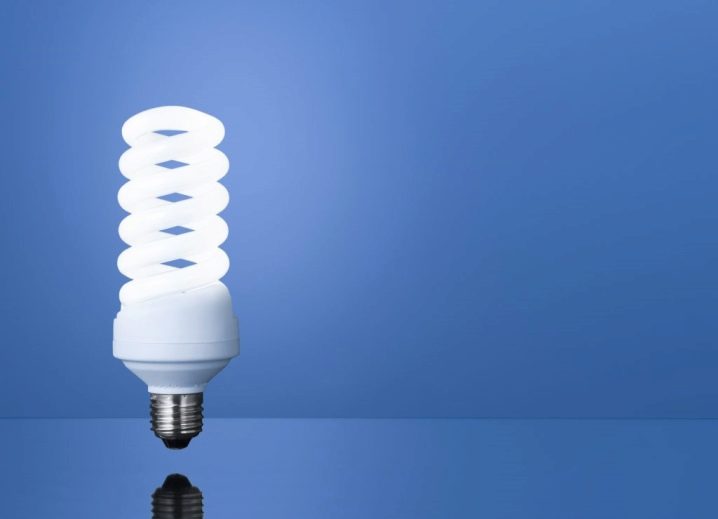
LEDs - new generation LED lamps. They are expensive, consume a minimum of electricity, do not flicker during operation, and transmit a uniform luminous flux. And although their light is directional, you can match any tone, including natural and color tones. The advantages include soft light and harmlessness: they do not emit toxins into the air.
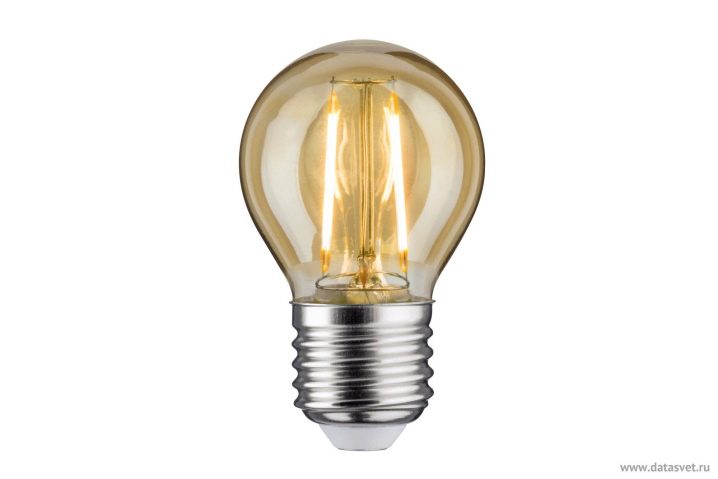
Models
By the type of lighting, wall sconces can be roughly divided into decorative accessories, work appliances and bedside lamps. The first products are needed to create a special interior composition: they are accent lighting that indicates the design idea. This type is classic, chiseled, near-surface. For example, in children's rooms it can be a flower with a closed shade, which stands out against the background of the wall and makes the room special and magical.
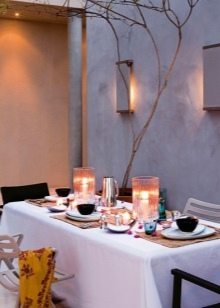
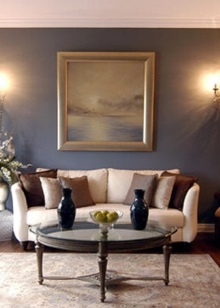
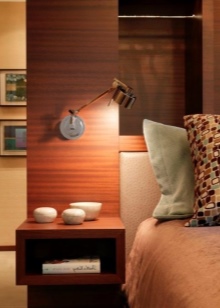
Models for work - designs with an emphasis on functionality. Most often they are located above a writing or computer table: these lighting devices provide the necessary lighting where the central lighting is insufficient. They have a simple design so as not to interfere with concentration. Night light constructions - models of the bedside plan. Today they are favorites, dissolving in a host of varieties and shapes. They own the main functionality, characterized by dynamic light or the creation of light pictures.
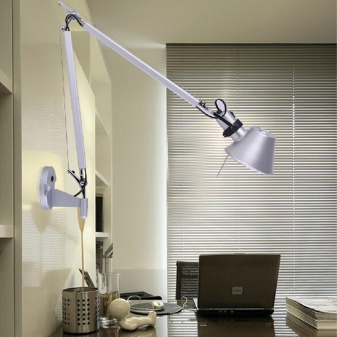
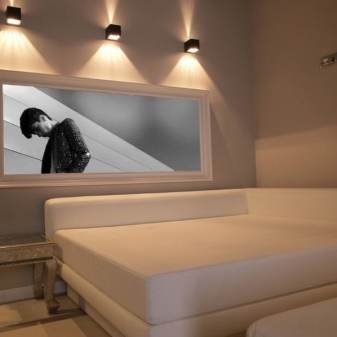
The existing types of wall lamps are divided into two groups:
- closed type;
- models with directional luminous flux;
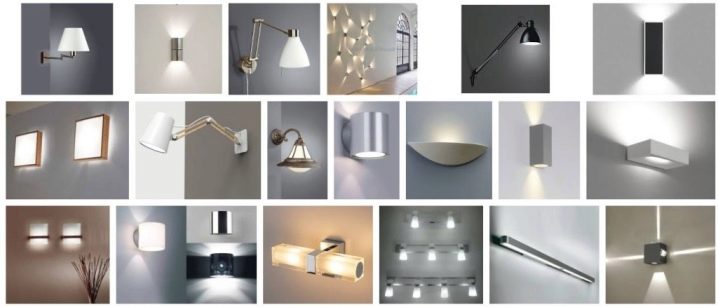
The first designs resemble ceiling lamps, are distinguished by a closed shade with a matte or transparent texture and a predominantly geometric shape. They are round, square, in the form of a rhombus with concave edges and a semicircle. Such designs are convenient in any room, fit perfectly into the modern style and can, in addition to walls, be placed on the ceiling. Options for children are made in the form of all kinds of toys, flowers, marine themes.
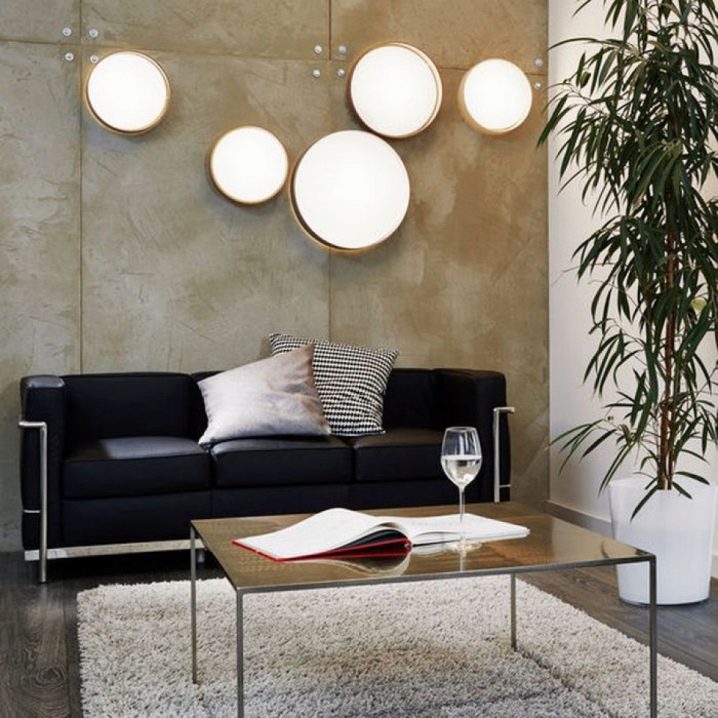
Sconces with directional luminous flux are single-lamp wall accessories in which the light source is open, while it is possible to adjust the direction of the light beam. They are used when working at a desk, for reading and for illuminating paintings and mirrors, as well as zoning space. Often, models are made with an emphasis on stylish and beautiful appearance. They can be classic, in the form of lamps with floor lamps, creative, similar to rough lanterns, metal pipes with open lamps, chemical bulbs and other futuristic.
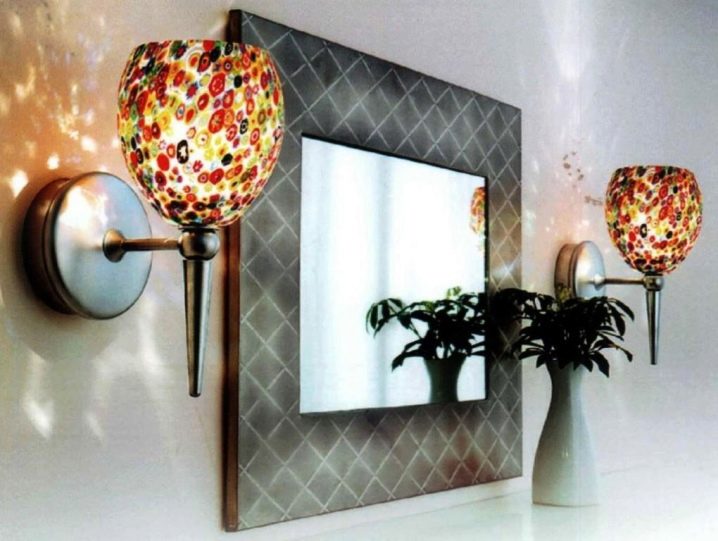
Popular wall models are:
- flowers with a string;
- geometric shapes with a built-in switch;
- candles and torches on a flexible stem;
- floor lamps and candelabra with a cord;
- round carved glasses and bowls;
- vintage lace shapes.
Sconces can be with a socket, dimmer. Surface models are relevant with a minimum of space. Suspended harmonious in spacious rooms


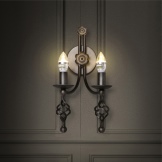
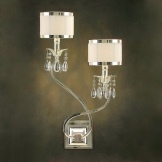

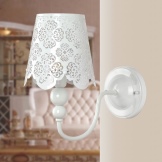
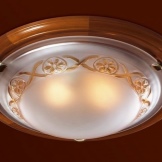
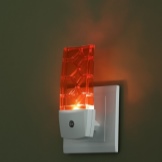
Switches
The range of electrical products takes into account functionality, stylish design and workmanship. It is the switch of the model, consisting of the working mechanism and protective elements, that is the main factor in the purchase of a wall lamp. It differs in the type of installation and location (sometimes on a wire, with hidden wiring), in the way of fastening the wires, in the control system, according to which it can be:
- keyboard - one-key or two-key light switch on the body;
- push-button - a system with a movable contact and a return spring;
- rope - an electric cord with a switch on a cord (cord);
- chain - a device analogous to a rope (a chain is used instead of a cord);
- rotary - switch on the body with a turn;
- touch - with a built-in microcircuit.
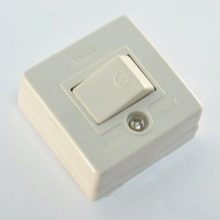
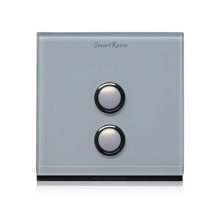
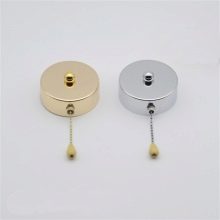


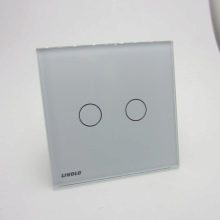
The luminaire is connected via a wall cable or directly to the mains. The system for switching on the mechanisms is different: the pass switch is turned on by pressing the up key, it is turned off - down, the rotary is a kind of lever, the dimmer turns, the push-button turns on when pressed for the first time, and switches off when the second is pressed. The rope version, according to the principle of operation, is an analogue of a push-button switch.
Color solutions
The color palette of wall lamps is varied and depends on several factors:
- the style of the room;
- color type of interior composition;
- sufficiency of lighting;
- own preferences;
- the age of the user;
- used material and finish.

The priority is transparent, white, beige, silver, gold shades of shades and decor of lamps: they harmoniously fit into almost any style of interior, while not reducing the intensity of the luminous flux and adding light spots to the space.

No less popular are the tones for bronze, brown-gray, purple.
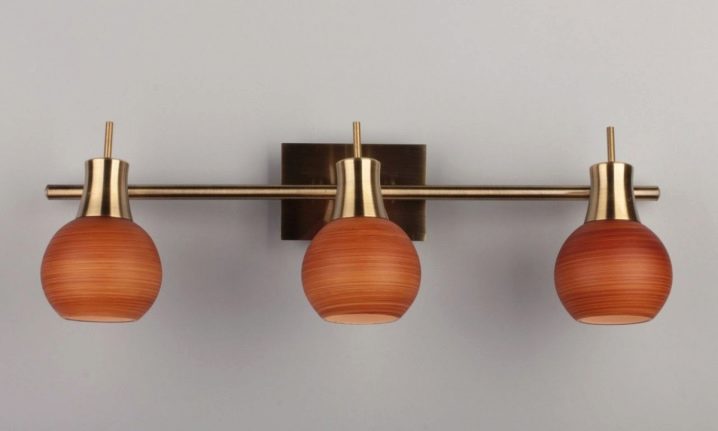
A fashionable technique is the metallic sheen of the material and the texture for vintage.
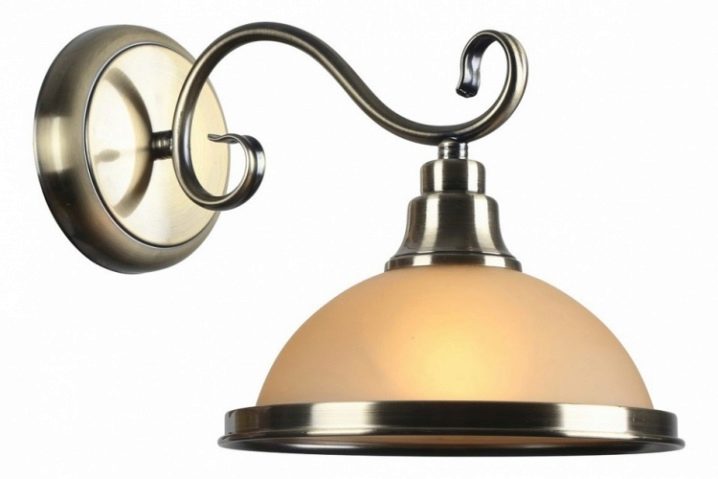
Black introduces a negative, so it is only used as a finish and in limited quantities. Models for children abound in bright colors: warm yellows, pinks, lilacs, greens and fresh mint colors are popular.
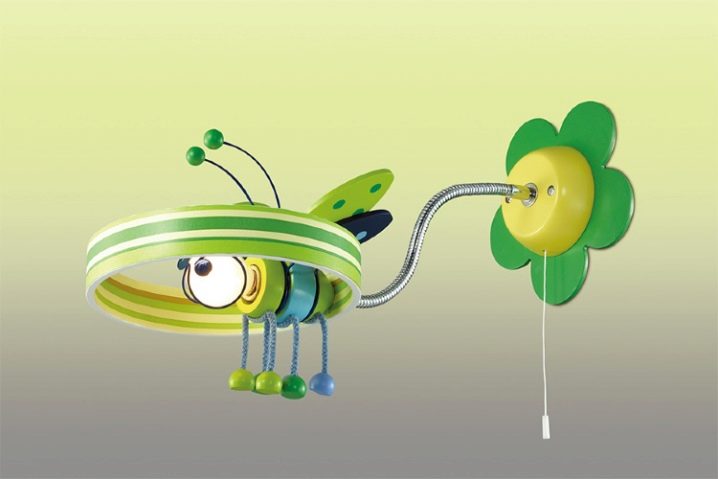
Selection Tips
When buying a wall lamp with a switch, it is important to consider:
- functional features: the presence of tilt angle adjustment, luminous flux intensity, on / off timer, motion sensor;
- material of manufacture: priority is given to painted wood, metal, glass (plastic and plastic are harmful, in the process of heating the lamp they release toxins into the air);
- conformity of material, design and style: wood-like varieties are appropriate in eco directions, plastic and metal models are relevant in modern interiors;
- reputation of the manufacturer and seller (among the high-quality design models, you can consider Tiffany lamps made in Italy and products of the Russian brand "Aurora");
- features of the switch: the dimmer allows you to vary the intensity of the glow from 0 to 100%, the touchscreen is equipped with additional functionality, which eliminates the occurrence of a short circuit;
- "Correct" type of lamps: it is worth choosing between halogen and LED (they do not need to get used to the eyes, if the shade is chosen correctly, in addition, they shine for a long time and practically do not heat up);
- the number of lamps in the model: if the room is dark, one lamp may not be enough;
- standard type of base: often creative models do not provide for lamp replacement, which makes the product unusable in the event of a light source burnout;
- matching the color and shape of the model with the central lighting fixture: the chandelier and sconces must adhere to the same scale and shape.
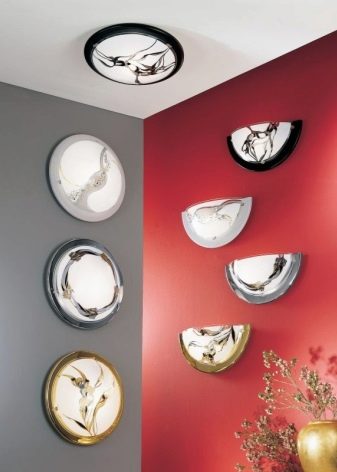
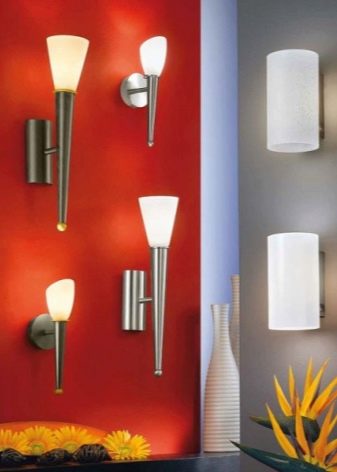
In addition, it is important to take into account that the light should not hit the eyes: this is harmful to the retina and optic nerve. Models with closed shades are preferable.
Accommodation options in the interior
To appreciate the role of wall lamps with a switch, you can see examples of the placement of sconces in different interiors.
You can illuminate the recreation area with several round-shaped LED lamps of different sizes, decorated with a gilded frame, placing them randomly on the wall above the sofa. Stylish and tasteful.
You can decorate the nursery, develop a love of beauty and make the room magical with the help of closed-type wall sconces in the form of flowers, adding bright butterflies to the summer design theme.
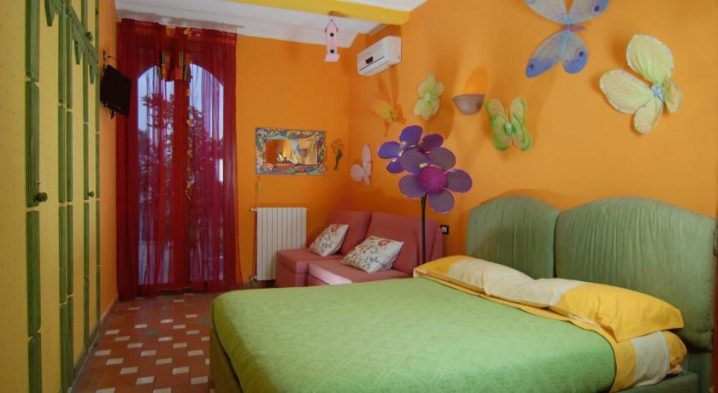
You can make the lighting of the dining area even with the help of several sconces, placing them between the mirrors, using lamps with finishing to match the mirror frames and furniture finishes to decorate the room.
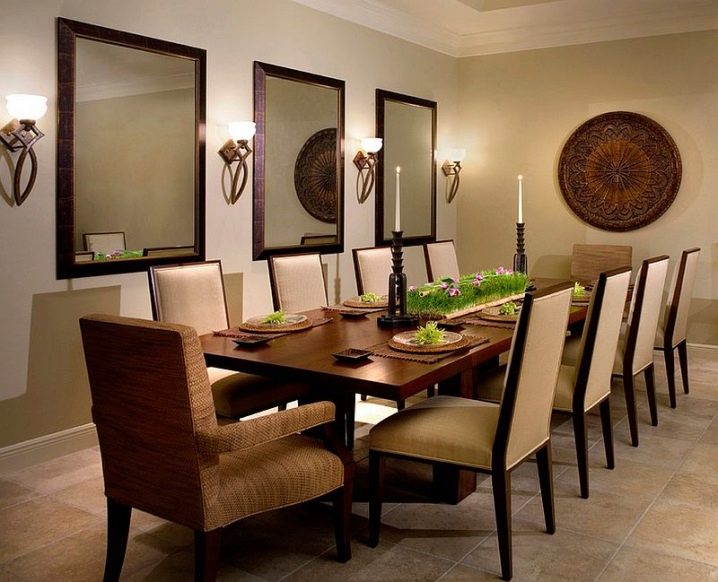
If you need something special, designer, you should think about the shape: the unique sakura and the lantern will become a striking design technique, decorating not only the wall, but even the corner of the room.
If you have the desire and skills, you can decorate the room with a do-it-yourself design: even with a simple silhouette of cat figures, the view of the room will be special.
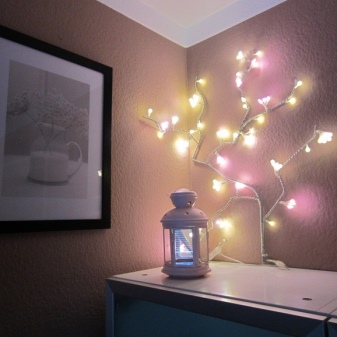
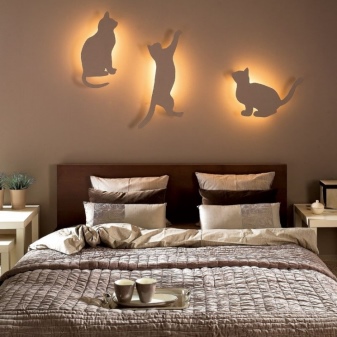
For information on how to place and connect wall sconces, see the next video.













The comment was sent successfully.